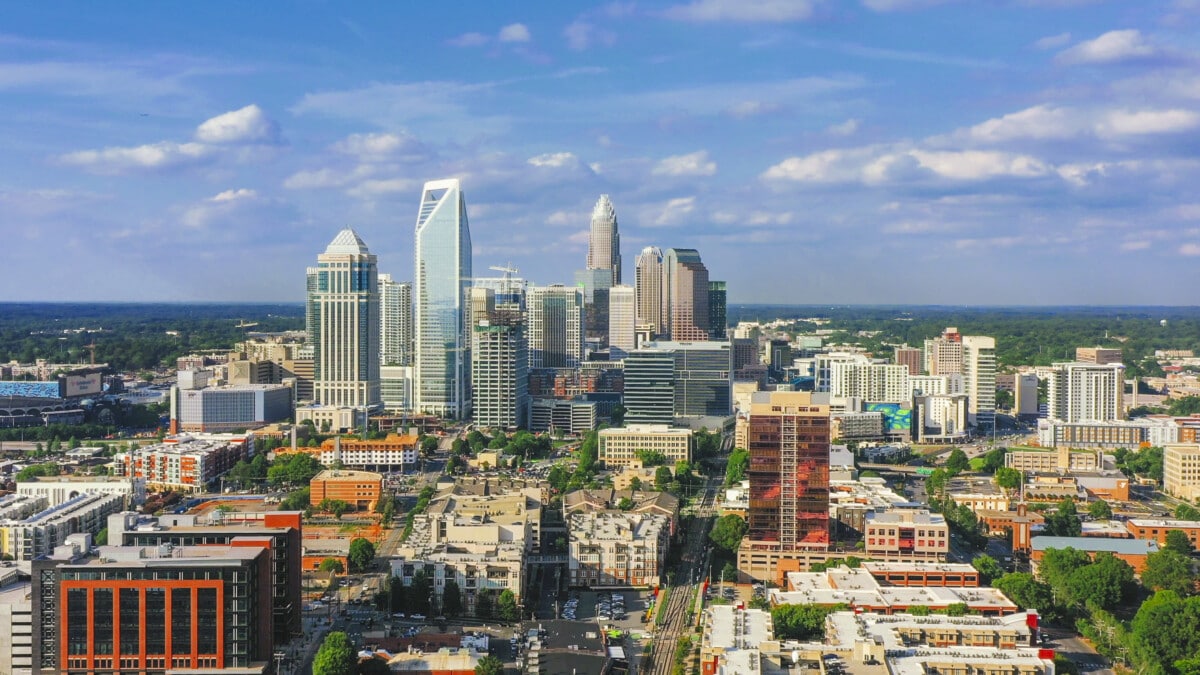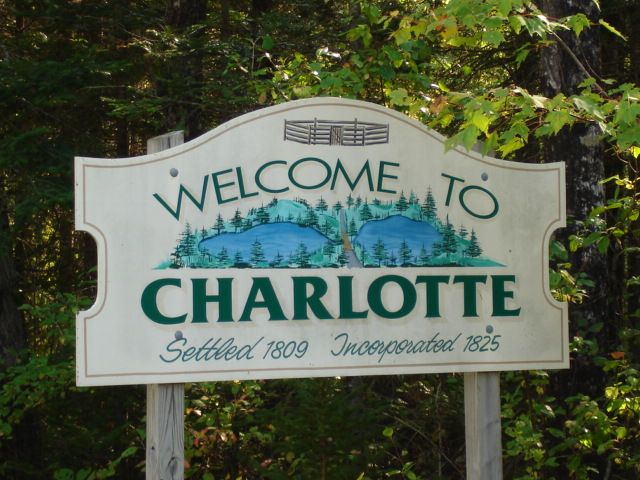Most Unsafe Neighborhoods in Charlotte Highlights City’s Challenges
The Most Unsafe Neighborhoods in Charlotte Sparks Concern and Calls for Community Collaboration
A new study examined a wide range of Charlotte communities. They sought to determine which one is the riskiest to reside in. In 2024, Lakewood was ranked as the worst neighborhood. This indicates that, in terms of safety and other crucial factors, it is not performing as well as other places.
The designation of Lakewood as the most unsafe area points to more serious problems Charlotte faces. While Charlotte is renowned for being a vibrant city with a variety of neighborhoods, certain places, like Lakewood, have greater challenges than others. Residents in Lakewood may be more concerned about employment, crime, and receiving the necessary assistance. To improve conditions for neighborhoods like Lakewood, the city and its residents must cooperate.

Knowing The Top 10 Unsafe Neighborhoods In Charlotte: The Danger Zones You Need to Know! (PHOTO: Redfin)
Turning Lakewood’s Challenges into Opportunities for a Safer, Unified Charlotte
By concentrating more on resolving issues in communities like Lakewood, Charlotte may get better. This entails making investments in infrastructure, human services, and involving everyone. Despite all of its problems, labeling Lakewood as the worst neighborhood might inspire people to take constructive action. The goal is to guarantee that every area of Charlotte is secure and friendly for all residents.
10 Most Unsafe Neighborhoods in Charlotte, NC
1. Lakewood
Concerns grow in Charlotte’s Lakewood neighborhood, which has 649 residents, as it becomes the most unsafe location due to alarmingly high crime rates. With 10,314 property crimes and 4,188 violent crimes per 100,000 people, safety is a big concern for the locals. Furthermore, Lakewood has poor economic standing; its $85,500 median home value has it among the fourth worst, and its $33,581 median income places it among the 13th worst in the city. These figures demonstrate the difficulties locals have in upholding a safe and orderly neighborhood.
2. Tryon Hills
Tryon Hills, a Charlotte neighborhood home to 855 people, has serious safety and economic issues. Tryon Hills suffers from high crime rates, with 3,837 violent crimes and 8,814 property crimes per 100,000 residents, despite being close to city amenities like shops and parks. With a typical income of $26,519, the area is ranked third poorest in the city, while its median home value of $151,050 places it as the 49th worst in the city. Locals struggle to find work, which is reflected in the high unemployment rate of 10.4%, which makes the community’s financial difficulties worse. These problems highlight the need for assistance and funding to raise Tryon Hills residents’ standard of living.
3. Pinecrest
With only 213 residents, Pinecrest is a small neighborhood in Charlotte that struggles despite having famous monuments like the Carolina Golf Club and New Shiloh Baptist Church. Although these locations provide recreational options, Pinecrest faces financial difficulties. Its low-wage work opportunities and 8.7% unemployment rate result in a median income of $37,206, ranking it as the 24th worst in the city. Residents struggle with a shortage of resources due to the restricted amount of store space and amenities. The neighborhood’s problems are further exacerbated by high crime rates, which stand at 5,563 property offenses and 4,917 violent crimes per 100,000 residents. These problems show how vitality initiatives and assistance are needed in Pinecrest to give its citizens better living conditions.
4. Smallwood
In Smallwood, a thriving Charlotte neighborhood home to 1,495 people, a strong sense of community perseveres in the face of economic hardship. with historical sites such as Martin Luther King Jr. Residents take delight in their surroundings, which include Park and the ancient Savona Mill that is undergoing restored. Nonetheless, the community faces a challenging economic environment, as evidenced by its 8.8% unemployment rate and $36,891 median income, which places it as the 22nd poorest neighborhood in the city. There is a dearth of facilities in the primarily residential region, which emphasizes the necessity for more development activities. Despite these challenges, Smallwood’s strong sense of community highlights its adaptability and growth potential under the correct conditions.
5. JT Williams
In JT Williams, a 389-resident Charlotte neighborhood, worries about safety coexist with financial difficulties. Residents still struggle with housing affordability and income levels despite somewhat lower crime rates—1,299 violent crimes and 5,032 property crimes per 100,000 people—when compared to comparable locations. Financial security is still difficult for many, with a typical property value of $88,100 placing it as the 5th worst and a median income of $35,625 placing it as the 19th worst in the city. These figures highlight the continued difficulties faced by JT Williams locals and highlight the resources and assistance that are required to enhance opportunities and living conditions in the community.
6. Jackson Homes
Jackson Homes is a 217-resident tiny neighborhood in Charlotte where inhabitants deal with ongoing safety issues as well as financial difficulties. Property crime is still a major problem in this community, with 5,172 incidents per 100,000 residents, despite violent crime rates being significantly lower than in neighboring communities at 1,335 incidences per 100,000 inhabitants. The city’s population face financial difficulties, as evidenced by their typical house value of $92,600, which ranks them ninth worst, and their median income of $30,179, which ranks them eighth worst. These figures highlight how urgently Jackson Homes residents require assistance and treatments to address the underlying problems compromising their well-being.
7. Reid Park
Despite its green spaces and attractions such as Reid Park and the Carolina Golf Club, Reid Park, a Charlotte neighborhood with 1,714 residents, has safety concerns and economic challenges. Property crime remains a serious issue, with 5,269 events per 100,000 people, despite violent crime rates being lower than in other areas, at 2,549 incidents per 100,000 people. The neighborhood’s 9.2% unemployment rate means that inhabitants continue to face limited job possibilities and financial instability, emphasizing the need for assistance and initiatives to improve living conditions in Reid. The neighborhood’s median home value of $110,767 puts it 19th worst in the city, while its median income of $35,703 ranks 20th worst.
8. Todd Park
Todd Park, a Charlotte neighborhood with 1,617 residents, continues to face safety and economic challenges. Property crime is a major concern, with 7,810 incidents per 100,000 people, despite violent crime rates being lower than in comparable areas at 2,328 incidents per 100,000 people. The neighborhood’s average property worth of $122,400, which ranks it 28th worst in the city, and its median income of $29,432, which ranks sixth worst, show the financial difficulties that its people endure. Todd Park’s high percentage of low-income households and lack of job opportunities underscore the community’s persistent financial troubles and the critical need for resources and help to improve its inhabitants’ well-being.
9. Druid Hills North
The 669 residents of Charlotte’s Druid Hills North community face both economic and safety difficulties. Property crime is still a major concern with 5,032 events per 100,000 people, even though the violent crime incidence is comparatively lower than in other places at 1,299 incidents per 100,000 people. The neighborhood’s typical income of $36,080, which puts it in second place in the city, and median property value of $92,600, which ranks it ninth worst, both emphasize the financial difficulties that the locals confront. Druid Hills North is still experiencing economic instability due to a large percentage of low-income households and a lack of work prospects, which highlights the need for programs and assistance to improve the community’s well-being.
10. Capitol Drive
There are persistent concerns about safety and the economy in the 573-resident neighborhood of Capitol Drive in Charlotte. Property crime is still a major concern, with 5,172 events per 100,000 people, even if the violent crime incidence is significantly lower than in other places (1,335 incidents per 100,000 people). The neighborhood’s $92,600 median property value, which ranks it as the 9th poorest in the city, and its $30,179 median income, which ranks it as the 8th worst, demonstrate the financial struggles that its residents face. Capitol Drive continues to face financial challenges due to a high percentage of low-income households and a dearth of job prospects. This highlights the significance of putting support measures in place to raise the standard of living in the community.




![Tyson Foods Plant [Photo: Food Manufacturing]](https://southarkansassun.com/wp-content/uploads/2023/08/iStock_1185520857__1_.5e441daa51cca-600x337.jpg)







![Silverado Senior Living Management Inc. [Photo: Los Angeles Times]](https://southarkansassun.com/wp-content/uploads/2023/10/download-6-4-600x337.jpg)

![China's Wuhan Institute of Virology [Photo: Nature]](https://southarkansassun.com/wp-content/uploads/2023/09/d41586-021-01529-3_19239608-600x337.jpg)
















